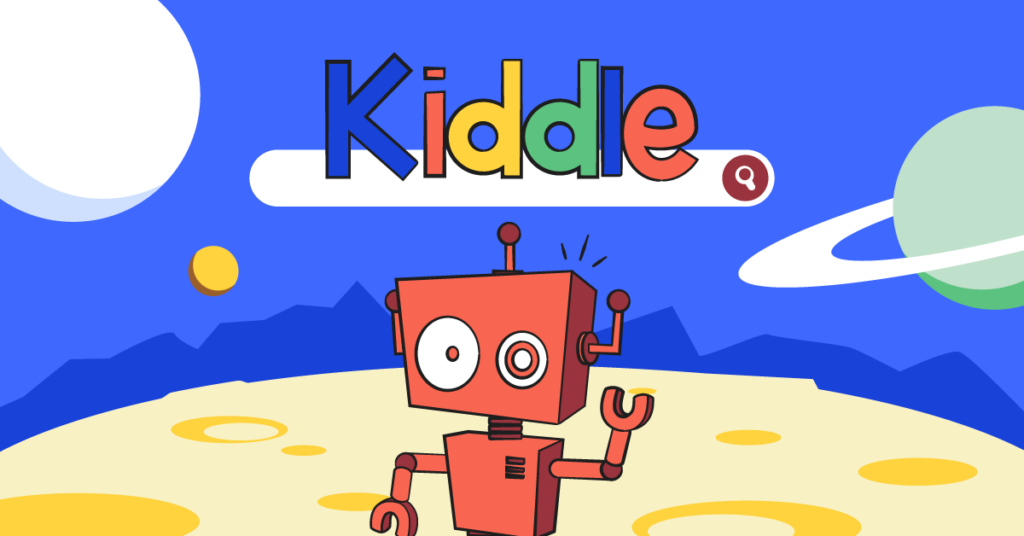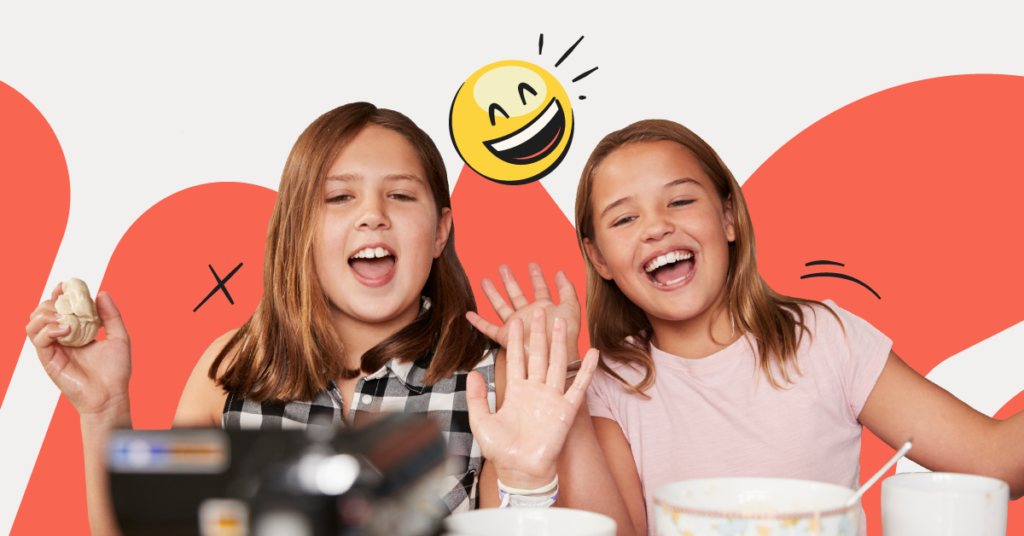
Do you ever feel like search engines aren’t entirely safe for kids? (They definitely aren't.) Do you worry that questionable content could show up in search results? It's totally normal to have concerns about what your kid might find when they're Googling for homework or even just for fun.
While it may seem like big search engines (like Google, Bing, and DuckDuckGo) must be very good at filtering out inappropriate results, they definitely don't. Porn, violence, and more can be easily accessed in just a few clicks. It’s also easy for kids to simply change the search settings to include all results, with no filters.
Is there a kid safe search engine? Are there various search engines for kids? Does Kiddle qualify? Kiddle is a solution that many parents use to help kids use the internet as a research tool without the risk of being shown harmful content. In this blog post, we’ll explore more about how Kiddle works and what to consider before making the switch with your family.
What Is Kiddle for Kids, Anyway?
Kiddle has built an answer to a problem that consistently plagues concerned parents: how kids can safely surf the web. Functionally, Kiddle is simply a kid safe search engine that has three big benefits for young tech users:
- Heavily filtered and vetted search results that won’t include obscene, violent, mature, or otherwise inappropriate content.
- Search results are primarily image-based, which means that they include relevant pictures or visual content directly from the source web page.
- An easy-to-use search interface and layout that uses simple fonts, primary colors, and understandable terms.
Though Kiddle looks and feels like Google, it is not a Google product. In reality, Kiddle’s operation as a search engine for kids is a website that works like a search engine and has a dedicated team of people who monitor and vet content on the platform. That being said, it isn’t perfect. For example, while a search for “sex” doesn’t return results, a search for “s3x” does. Although they’re not pornographic, it’s worth noting that their filters aren’t foolproof.
How Does Kiddle Work?
Kiddle for kids looks pretty much like any other search engine but it’s a kid safe search engine. At the top of the main page is a simple search bar, and users can select the type of content they want to see in search results.
Without getting bogged down in techno-babble, Google has a product called Programmable Search Engine that lets search engine-style websites pick and choose which results they want to show users. This brings the power of Google’s algorithm within reach, but with tight reigns around content. Google SafeSearch is another way that Kiddle filters results, and it’s the backbone of their search function.
In addition to SafeSearch, Kiddle also has editors who manually review content. According to Kiddle, many of the results displayed have been “recommended” by trusted sources like parents, educators, etc. The search results displayed by this search engine for kids are ranked by their “safeness,” which we’ll discuss more later on.
If you spend a few minutes using Kiddle, you’ll notice that they emphasize visual search results. Essentially every result will include a related image from the recommended site or page. This is intentional as Kiddle believes that image-based searches are easier for kids to navigate and digest.
Kiddle displays several kinds of results that have been filtered for children’s use, including:
- Web pages
- Images
- “Kimages” (images that are sourced from a kid-friendly multimedia encyclopedia).
- News sources
- Videos
- Kpedia (Kiddle’s child-focused online encyclopedia)
One of Kiddle’s best features is how they separate results into three main categories, depending on their kid-friendliness.
- Results 1–3 show sites and pages that are “specifically written for kids,” and that have recently been reviewed by Kiddle editors. The results can all be easily accessed, read, and navigated by kids.
- Results 4–7 include sites that may not be written or intended for use exclusively by kids. However, these sites have been handpicked and checked by Kiddle editors to verify that the results are suitable for and accessible to children. Kiddle editors also verify that sites will be easy to read and navigate.
- Results 8 and beyond are generally considered safe, but they are known to be written for adults. These are “well-known” sites that can be reasonably trusted, but the content might be more academic. Plus, these results are not reviewed by editors.
Content Blocking and Reporting
If a user spots something suspicious or questionable in the search results, they can report it directly to Kiddle for correction. Specific keywords or sites can be blocked from the results, or Kiddle editors can decide where they should be featured in the results.
We want to share a quick note here on how Kiddle evaluates material. In its early years, Kiddle received some criticism for blocking search terms or topics that could be considered controversial to some, including those related to LGBTQ+ issues. Since then, they have selectively opened up some search results. Ultimately, their guidelines don't always align with every family's values.
What Are the Best Ages to Use Kiddle for Kids?
Any child browsing the internet can certainly benefit from Kiddle. But, older kids will likely get frustrated by the limited interface and results. This is especially true as kids take on complex homework assignments that require research around the web. Plus, it has a decidedly youthful design that teens won't always appreciate.
For example, medical terms or mature subject matter (but not explicit) will likely be blocked. Even libraries contain some “mature” material on subjects like art, medicine, culture, and more.
Here’s an easy way to think about using Kiddle with your family: Are your kids old enough to search online independently but too young to spot and avoid questionable content? Roughly, this probably means using Kiddle for kids who are between the ages of 8 and 12.
Privacy and Tracking
Unlike search engines and browsers which often collect a great deal of data, Kiddle does not collect any personally-identifying information.
Kiddle does show ads, though. Ads are visible in search results (text ads) and on individual result pages (display ads). While they do delete their search logs every 24 hours, Kiddle also uses cookies to personalize ad experiences. So, it’s reasonable to assume that kids are shown targeted ads based on their previous browsing history even if searches aren’t stored.
This is probably one of Kiddle’s biggest downsides. Even when browsing results on search engines for kids, ads are shown pretty much everywhere.
Once kids move off of the Kiddle page to an external website, they will be subject to any other tracking activity that their browser allows. They can also, of course, access any material on this external site. This makes Kiddle a great starting point, but not totally sufficient for full internet activity monitoring.
The Verdict on Kiddle for Kids
Although Kiddle is one of many fairly safe search engines for kids, it doesn’t provide any insights for parents about what their kids are doing online. Plus, it often filters out too much for older kids, and doesn't always catch everything. We highly recommend using it in collaboration with a content monitoring and website blocking tool like Bark. Bark can block porn, violent content, and more plus alert you if your child encounters these issues (and others) anywhere on their devices.
Bark helps parents, educators, and care providers learn how kids are communicating online, and where adult attention could be needed. By monitoring communication and activity from over 30 different social media platforms, texts, and email, Bark gains a comprehensive understanding of potential issues, including:
- Instances of cyberbullying.
- Expressions of self-harm.
- Dangerous social situations.
Plus, Bark gives parents precise control over exactly which apps are accessible on their kid’s devices, and when. Together, tools like Kiddle and Bark form a powerful combination for helping to protect kids online while also letting them grow in responsibility and independence.
Read more
Bark helps families manage and protect their children’s digital lives.




